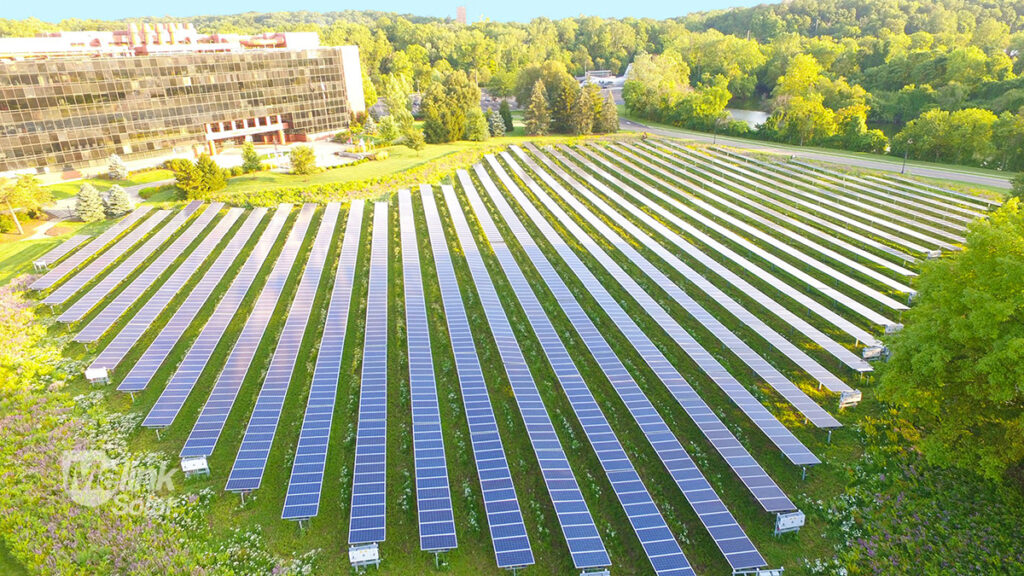University of Dayton – UDRI
Melink Solar partnered with the University of Dayton to install 4,026 solar panels with a capacity of 1.26 megawatts of power at two of the University’s campus locations: Curran Place and Fitz Hall. Melink Solar engineered and constructed the arrays and sold the electricity generated to the University through a power purchase agreement. The University purchased the arrays after eight years.
-
855 kW
-
Mount Type: Ground Mounted
-
Location: Dayton, OH
-
Project: Completed 2018
1,169
Tons of CO2 Offset
2.8 Million
MILES OF GASOLINE CAR USE
19,482
PLANTED TREES


The solar arrays provide nearly 10 percent of the power consumption of both buildings, as well as power for electric car stations at the two locations. Overall, the panels supplied approximately 2 percent of the campus-wide power consumption and offset carbon emissions by about 1 percent annually.
“We were super-excited to partner with the University of Dayton,” said Melink Solar Founder Steve Melink. “This is an opportunity to educate and inspire not only the students and faculty but the public throughout Ohio and the Midwest. Sustainability and clean energy are the way of the future, and U.D. set a strong example as a leader in this area.”
Melink Solar and the University of Dayton worked together to provide opportunities for students, faculty, and researchers to participate in the installation of the modules, documenting the process for future use. After installation, the Hanley Sustainability Institute and the University of Dayton Engineers in Technical Humanitarian Opportunities of Service learning (ETHOS), along with other faculty, staff, and students, planned to use the modules for sustainability research and incorporate them into the curriculum or other programming.
“One attractive feature of working with Melink Solar was their involvement of our students from the very beginning and on an ongoing basis,” said Bob Brecha, director of research at the University of Dayton Hanley Sustainability Institute. “Our campus has intentionally become a giant sustainability lab where students from all majors can actively participate in many of our efforts to create a greener campus.”
